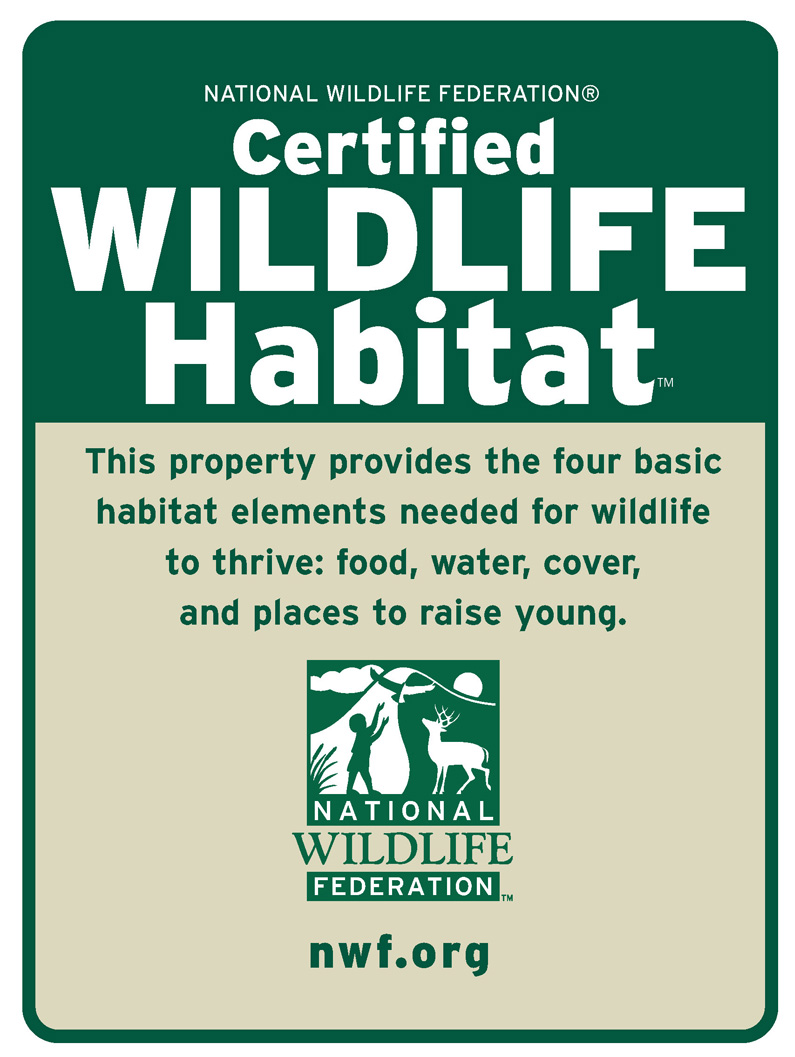 Backyard Wildlife Habitat - April 19, 2017 Jeff Schalau, Agent, Agriculture & Natural Resources University of Arizona Cooperative Extension, Yavapai County Most gardeners enjoy viewing wildlife. However, the joy of viewing can be overshadowed by damage caused by unwanted visitors. To understand individual wildlife species' habitat requirements and behavior is to live in harmony with them – at least most of the time. This becomes increasingly important the closer you live to open space. The transition zone between a populated area with paved streets and houses and undeveloped open space is called the wildland/urban interface. These interface areas have the highest potential for wildlife conflict. This is especially true in areas of new construction. It is important to remember that wildlife species were here first and we are latecomers. Wildlife habitat is defined by four essential elements: food, water, shelter (cover), and space. Sometimes, arrangement is included as a fifth element. This refers to the amount and proximity of the four essential elements. The foundation of the habitat is the vegetation type that exists on the site. Food sources may include plant material (including roots, pollen, and nectar), insects, or other animals. If preferred food sources are not available but other habitat elements are optimal, then some species will look for new sources of food such as pet food, vegetable gardens, fruit trees, or landscape plants. If you have a water feature, such as a pond or fountain, in your landscape, you can plan on having many wildlife visitors. Water features can also be dangerous to wildlife. If the water is deeper than 1 or 2 inches, you should provide a means for animals to escape if they fall in. This can be some gently sloping rocks, bricks, or an escape ramp constructed from expanded metal. Ponds with fish are also attractive to predators such as raccoons and blue herons. In deep ponds (over 2 feet), rocks and/or vegetation will provide fish with necessary cover to evade most predators. Attractive shelter can be provided by birdhouses, vegetation, large rocks, standing dead trees, down logs, debris piles, wood piles, prickly pear cactus, or even a yucca with a skirt of dead leaves. Conversely, crawl spaces under houses, old cars, tires, and broken appliances may also provide shelter. A mixture of evergreen and deciduous trees will provide birds with a combination of perches and cover during the winter months. Trees and shrubs that carry foliage to the ground provide shelter for rabbits and ground-foraging birds. Crawl spaces under homes are notoriously attractive to skunks, woodrats, and raccoons. Space is probably the most difficult habitat element to understand and definitely the most expensive to provide. Large animals such as elk and deer require a large area to range over such as a ranch. Woodrats have much smaller space requirements. However, they do travel some distance at night. Space can also be restricted by fencing or creating individual plant barriers/cages over preferred plants. Birds can fly from one space to another, but if you want them to nest, the space must have a suitable arrangement of food, water, and shelter. Again, this varies from species to species. Some animals can be attracted fairly easily. Birds are a good example. Keep a feeder in a safe place. Providing high quality feed will attract many visitors. Rather than having to remember to restock sugar water and clean the feeder, I prefer growing nectar producing flowers for hummingbirds. These include penstemon, Indian paintbrush, honeysuckle, trumpet vine, skyrocket (Gilia), columbine, and others. If you buy cheap birdseed, they will pick through the milo kicking it out on the ground to find the preferred sunflower seeds. This seed on the ground will attract javelina, rock squirrels, rats, mice, feral pigeons, and other potentially undesirable visitors. If you do feed birds, be consistent and keep your feeders clean and filled. Do not intentionally leave food out for raccoons, javelinas, and other wildlife species. This practice creates an unnatural increase in wildlife populations thereby causing an increase in nuisance wildlife activity. In addition, feeding wildlife causes them to become dependent on this food source making them less likely to forage naturally for food. Subsequently, these animals may become aggressive towards both people and pets. See below for more backyard habitat information. Once you learn a little about local wildlife and their habitat requirements, you can use it to protect and enhance your garden! Follow the Backyard Gardener on Twitter – use the link on the BYG website. If you have other gardening questions, call the Master Gardener help line in the Camp Verde office at 928-554-8992 or e-mail us at verdevalleymg@gmail.com and be sure to include your name, address and phone number. Find past Backyard Gardener columns or provide feedback at the Backyard Gardener web site: http://cals.arizona.edu/yavapai/anr/hort/byg/. Additional Resources Backyard Conservation USDA Natural Resources Conservation Service www.nrcs.usda.gov/wps/portal/nrcs/detail/national/home/?cid=nrcs143_023574 Garden for Wildlife National Wildlife Federation www.nwf.org/Garden-For-Wildlife/Create.aspx Elements of a Habitat Garden Sunset www.sunset.com/garden/landscaping-design/elements-of-habitat-garden |